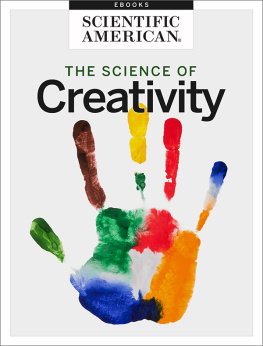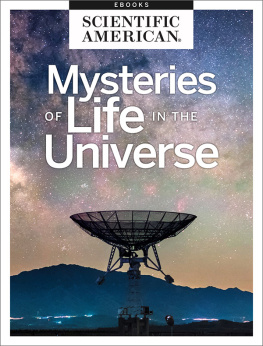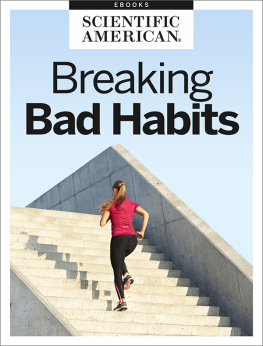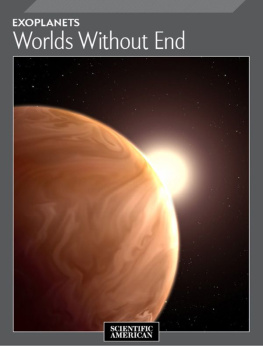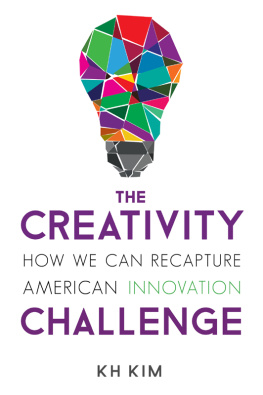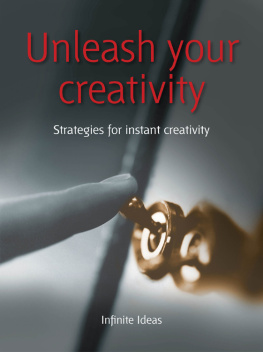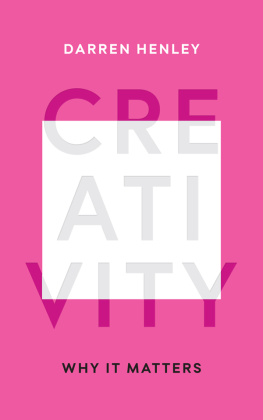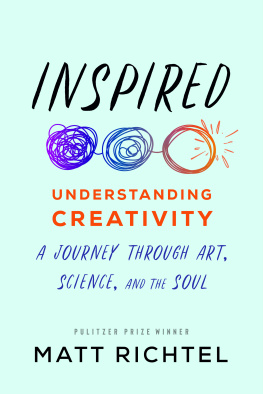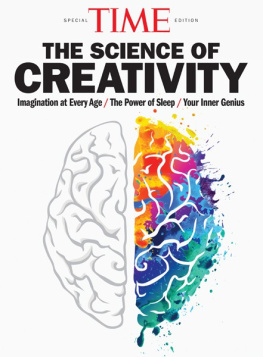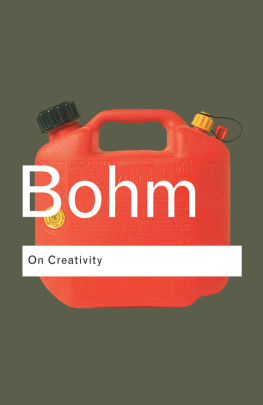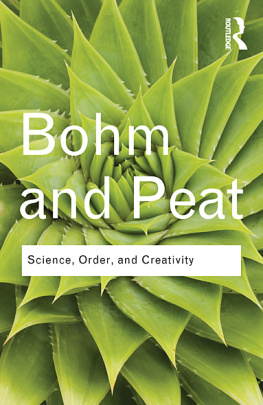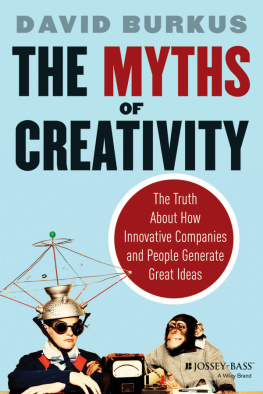The Science of Creativity
From the Editors of Scientific American
Cover Image: Dmitry Muravev/Getty Images
Letters to the Editor
Scientific American
One New York Plaza
Suite 4500
New York, NY 10004-1562
or editors@sciam.com
Copyright 2017 Scientific American, a division of Nature America, Inc.
Scientific American is a registered trademark of Nature America, Inc.
All rights reserved.
Published by Scientific American
www.scientificamerican.com
ISBN: 978-1-4668-5896-1
Scientific American and Scientific American MIND are trademarks of Scientific American, Inc.,
used with permission.


INSPIRED!
The Science of Creativity
From the Editors of Scientific American
Table of Contents
Introduction
by Dawn Stover
Section 1
1.1
by Heather Pringle
1.2
by Jennifer E. Drake and Ellen Winner
1.3
by Daisy Yuhas
1.4
by Dean Keith Simonton
Section 2
2.1
by Shelley Carson
2.2
by Alicia Anstead
2.3
by Brian Levine
2.4
by Jonathan Pevsner
2.5
by Ingrid Wickelgren
Section 3
3.1
by Deirdre Barrett
3.2
by Ursula Voss
3.3
by Josie Glausiusz
3.4
by Melinda Wenner Moyer
Section 4
4.1
by Evangelia G. Chrysikou
4.2
by Mariette DiChristina, John Houtz, Julia Cameron and Robert Epstein
4.3
by Edward Glaeser
4.4
by Lus M.A. Bettencourt and Geoffrey B. West
4.5
by Allan W. Snyder and Sophie Ellwood
Unleashing the Creative Mind
My parents thought I would make a gooddoctor or engineer. I excelled at science andmath, after all. Instead I chose to pursuejournalism, even though it seemed better suited for a creative person than for me. Ihad a passion for writing but not necessarily a flair, and my early efforts were not pretty.Fortunately, as this special newsstand edition shows, creativity is not just somethingyoure born with. Most of us have more of it than we realize.
Some people, of course, have a creative edge from an early age. In Predicting ArtisticBrilliance, Jennifer E. Drake and Ellen Winner write about a two-year-old who would work meticulously for days on a single drawing and about anotherchild who drew astonishingly realistic dinosaurs by age six. These children havewhat the authors call a rage to master.
What makes some people more creative than others? In The Unleashed Mind,Shelley Carson writes that genetic variations may make some peoplesbrain more open to thoughts, sensations and behaviors that dont make it past the averagepersons mental filters. These same variations may also explain why many highlycreative people seem eccentric at timesor even suffer from mental illness.
Despite these genetic variations, nurture may still account for the lions share ofgenius, writes Dean Keith Simonton in The Science of Genius.Practice, training and exposure to unfamiliar ideas and experiences play essential rolesin shaping creativity. Even something as simple as living in a big city promotes creativitybecause close contact with other humans breeds new ideas, explains Edward Glaeserin Engines of Innovation.
Dreams and imaginative play can also nurture creativity. Dreaming may allowideas to incubate during sleep, leading to inspiration during waking hours, writes DeirdreBarrett in Answers while You Sleep. Daydreaming can likewise "reup neurons that give you access to ideas and solutions hovering below the surface ofyour consciousness, as Josie Glausiusz writes in Living in an Imaginary World. Stimulating the brain with a weak electric current to make the left hemisphereless dominant may even boost creative thinking, according to Allan W. Snyder et al. inSwitching on Creativity. A panel of experts reveals other powerful techniquesfor cultivating originality in Let Your Creativity Soar.
As it turns out, creativity is just as important in medicine and engineering as it isin journalism. In Your Fertile Brain at Work, Evangelia G.Chrysikou explains how innovation can elevate the careers of chefs, university presidents,psychotherapists, police detectives, teachers, engineers, architects, attorneysand surgeons. We hope this special issue will help you unleash your own creative self
Dawn Stover
Book Editor
SECTION 1
Where Creativity Comes From
The Origins of Creativity
by Heather Pringle
Unsigned and undated,inventory number 779hangs behind thickglass in the Louvresbrilliantly lit Salle destats. A few minutes after thestroke of nine each morning, exceptfor Tuesdays when the museumremains closed, Parisians andtourists, art lovers and curiosityseekers begin flooding into theroom. As their hushed voices blendinto a steady hivelike hum, somecrane for the best view; othersstretch their arms urgently upward,clicking cell-phone cameras.Most, however, tilt forward, a lookof rapt wonder on their faces, asthey study one of humanitys mostcelebrated creations: the Mona Lisa, by Leonardo da Vinci.
Completed in the early 16th century,the Mona Lisa possesses amysterious, otherworldly beauty quiteunlike any portrait that came before it. Toproduce such a painting, Leonardo developeda new artistic technique he calledsfumato, or smoke. Over a period ofseveral years he applied translucent glazesin delicate filmssome no more thanthe thickness of a red blood cellto thepainting, most likely with the sensitive tipof his finger. Gradually stacking as manyas 30 of these films one on top of another,Leonardo subtly softened lines and colorgradations until it seemed as if the entirecomposition lay behind a veil of smoke.
The Mona Lisa is clearly a work of inventive genius, a masterpiece that standsalongside the music of Mozart, the jewelsof Faberg, the choreography of MarthaGraham, and other such classics. Butthese renowned works are only the grandestmanifestations of a trait that has longseemed part of our human hardwiring:the ability to create something new anddesirable, the knack of continually improving designs and technologiesfromthe latest zero-emissions cars made inJapan to the sleekly engineered spacecrafton NASAs launchpads. Modern humans,says Christopher Henshilwood, an archaeologist at the University of the Witwatersrand,Johannesburg, are inventorsof note. We advance and experimentwith technology constantly.
Just how we came by this seeminglyinfinite capacity to create is the subject ofintense scientific study: we were not always such whirlwinds of invention. Although our human lineage emerged inAfrica around six million years ago, earlyfamily members left behind little visiblerecord of innovation for nearly 3.4 millionyears, suggesting that they obtained plantand animal foods by hand, with tools suchas digging or jabbing sticks that did notpreserve. Then, at some point, wanderinghominins started flaking water-worn cobblestoneswith hammerstones to producecutting tools. That was an act of astonishingingenuity, to be sure, but a long plateaufollowedduring which very littleseems to have happened on the creativityfront. Our early ancestors apparentlyknapped the same style of handheld, multipurposehand ax for 1.6 million years,with only minor tweaks to the template.Those tools are really kind of stereotypical,says Sally McBrearty, an archaeologistat the University of Connecticut.

